What’s the most revered and elusive ramen experience in the world? This issue of the Ramen Beast newsletter is all about answering that question. Deep in the countryside of Japan’s southern island of Kyushu, in an unmarked shack on a desolate street corner, sits Rairai. The shop is open just three or four days each week, and service usually begins before dawn — with all of the ramen selling out before 8am. Little is known about the master (photos of the chef and shop interior are forbidden). The ramen itself is said to be ridiculously simple: a clear pork soup, noodles and thin slices of chashu. That’s it. And yet, many ramen heads consider Rairai to be the most sought-after — even mythical — bowl of ramen in all of Japan. Below, Ramen Beast’s Abram Plaut tells his personal story of finally visiting Rairai firsthand after years of anticipation.
But first…
►Post-Pandemic Ramen Hunting: 10 New Shops to Try
Is the pandemic behind us? Not yet. But some of us are starting to fantasize about being able to travel again. Japan’s COVID-19 situation never got so dire that it decimated the local restaurant industry. Instead, new restaurants continued opening throughout 2020 — especially ramen shops, which are relatively inexpensive and quick to launch here. With travel to Japan expected to reopen sometime later this year, Ramen Beast selected ten recently launched ramen shops that returning food lovers should place high on their pending hit lists. The shops were selected for both excellence and ease of access for visitors. Check out the list.
This is Ramen Beast’s second newsletter. We’ll be sending these dispatches weekly. If you like what you see, please share or subscribe.
►The Legend of Rairai…
This story begins with the legend of a shop that many ramen fiends have heard about but exceedingly few have actually visited. Often sitting at the top of Japanese ramen rankings, Rairai is notorious for being one of the most revered yet elusive bowls known to exist.
Located in the working-class city of Iizuka, about an hour drive by car from central Hakata on Japan's southern island of Kyushu, the shop is more or less in the middle of nowhere. Getting there from Tokyo involves a flight, a lengthy car ride, and at least one night's stay somewhere in Kyushu. Iizuka isn’t known for much — if anything, it’s rumored to have a strong yakuza presence. Basically, no one comes all the way out here unless they have a very good reason. But it's here in Iizuka, located on a desolate street corner, that a renowned, rundown-looking ramen shack is found. There is no sign, no shop hours, nothing indicating there is a business of any kind. Out of this unsuspecting shack, in the middle of nowhere, a lone master serves 20-30 bowls of ramen per day, three days a week. The bowls contain a clear soup, noodles and thin pork chashu. Nothing else. The shop opens early in the morning and often sells out before 8am. No information is posted publicly. All media requests are rejected. On some days, the shop simply doesn't open — and there's no way to find out ahead of time. If you attempt to visit, you are leaving it up to fate.
So, it’s abundantly evident that this is not a shop for novices. But for ramen heads in the know, this bowl is considered the holy grail.
Rairai had been #1 on my ramen hit list for years, but since it was such a pain to get to, and reliable info was so limited, I had never dared make an attempt (once, a friend and I briefly attempted to barter with a taxi driver to take us there from the Kyushu city of Kokura, but in the end we chickened out). Like so many of my most unforgettable ramen experiences, the story of how this adventure finally came to fruition involves some random encounters and a lot of luck. The first chapter is how I met my Fukuoka ramen senpai, Johnny.
A couple of years back, I was crushing ramen solo in Fukuoka when I stumbled into one of the top-ranked shops in the city, Hanamokoshi. This shop is run by an eccentric master who is truly badass in his approach to ramen. He makes everything, including the noodles, from scratch and he runs all operations solo. Inside his shop, my eye was drawn to some striking original t-shirts that were up for sale. The designer had taken the logo for Zig-Zag rolling papers and flipped it, so that instead of the guy smoking a cigarette he was slurping noodles. Instead of Zig-Zag, it said ‘Zuru Zuru,’ which is the Japanese onomatopoeia for slurping noodles. I thought it was genius and ended up walking out with a tee that day.
Months later, after I posted a photo of the t-shirt on Instagram, some Westerners apparently tracked down the source of the shirts in Fukuoka — the designer himself. When two white guys showed up at his ‘hidden’ select shop located on the second floor of a nondescript apartment building, the Japanese designer was naturally curious how they had found him. He became even more curious when he heard they were introduced to his work by another foreigner who is known as a hardcore ramen eater. And so this guy closed the circle and tracked me down to make contact. He said his nickname was Johnny, and he wanted to meet.
The next time I flew down to Kyushu I linked up with him. Johnny turned out to be a former importer of vintage Reggae records. Back in the heyday, he would go on trips to London searching for rare LPs to bring back to Japan. Nowadays, he runs his own hidden select store in Fukuoka, which also acts as a local hangout and home base for his colorful network of friends. He also visits onsen hot springs and bathhouses almost every day. He’s a bathhouse beast. Of course, he also crushes ramen. Once he took me under his wing — and started driving me around the region in his car — my knowledge of Fukuoka ramen went up tenfold. Born and raised in Fukuoka, he knows the city better and has more connections than anyone I’ve ever met. A local boss, without a doubt.
Johnny knew Rairai had been number one on my ramen hit list for several years, and he said he wanted to help. By calling around to friends, he was able to get some intel. And so, on a drizzly Saturday morning in September 2020, he swooped me up from my hotel at the crack of dawn and we sped out on the expressway towards Iizuka.
When we arrived at the shop it was just after 7am and around 15 people were waiting in the rain holding umbrellas. We parked and anxiously hustled over to get in line. ‘Sorry, sold out’ we were immediately told by the last group of customers. Gut punch. It turns out the last guys in line were a group of three, and they had arrived at 6:30am only to be told there was only enough soup left for one bowl. If they wanted to stay, the three of them would have to share one bowl of ramen. They were waiting in the rain to do just that. Although we were defeated at Rairai, Johnny and I spent the rest of that day crushing other epic ramen bowls in Saga Prefecture, so in the end it was all good. But getting so close to finally trying Rairai only to be denied just made me want it more. I knew I had to come back.
Revenge came during the last week of November 2020. I really had no other reason for booking the flight from Tokyo to Fukukoka — the sole purpose of this mission was to cross Rairai off the list, once and for all.
Again, Johnny picked me up from my hotel — this time even earlier, the sky still black with no signs of morning light. We swooped up some 7-11 coffees, put on some roots reggae and raced to Iizuka. We would not be denied this day. We parked the car, hustled over and got in line. There was no acknowledgment from any of the other 10 or so customers already waiting silently in the darkness. A dim light shone from the grid of small windows on the shop's front door. This was it. We had made it.
The first thing I’ll say about Rairai is this: Normal people need not come. This is a place for the freaks. Hardcore foodies, bloggers, and, of course, the ramen heads. While we were waiting in line, a car peeled around the corner and came to a sudden stop, almost a little too aggressively, to the point where you might raise an eyebrow at the driver. The window rolled down and a frantic, sweaty Japanese man stuck his head out the window. 'Where is the parking lot??!’, he almost seemed to beg. We told him and he sped off to park, only to then run to the end of the line and bow an appreciation towards us for assisting him. ‘He smells of desperation,’ whispered Johnny. If it wasn't clear already, a visit to Rairai is not about grabbing a good meal when you are hungry. It's not about visiting a famous restaurant with friends for a special occasion. This is about accomplishing a mission, and satisfying that itch of discovery. Bragging rights and self-triumph. The rush of the hunt. I figured it would be my one and only visit.
After 90 minutes of waiting as the sun continued to rise, we were at the front. A tiny sign the size of my pinky finger reading ‘open’ in Japanese was pinned up outside the front door. Other than that, no marks of a business could be seen. The door opened and a large group exited. ‘Dozo!’ exclaimed the master. We were in.
The master, Ikeda-san, grinned widely behind his mask as we took our seats and ordered. A partition blocked the view into the kitchen, making it impossible to see any of the cooking. A sign clearly stated, 'no photos allowed other than of the ramen.' Seven seats around an L-shaped counter. Myself, Johnny, a couple of Japanese food blogger types, an older stoic-looking local man in a fisherman-style bucket hat and rubber boots, and two empty seats. I found it funny that the master kept two seats empty while there were still 10+ customers waiting anxiously outside. Clearly he did not give a fuck. Before we knew it the master was talking to me. ‘So, you’re not from around here!’ And so the conversation began, as the master cheerfully instigated chitchat with all of us. Everyone seemed to have an interesting story. I could see the master was loving every minute of it. What type of people make the extreme effort required to eat his ramen? He truly seemed to appreciate the effort each person had made to visit. It wasn't even 8am yet. While quirky and goofy in conversation, the master simultaneously maintained an intense focus and seriousness on the task of preparing the food. A ramen pro, palpably. Moments later, the bowls were upon us.
The visual appearance of this ramen is striking. Kyushu is the land of tonkotsu. Rich, creamy, stinky, pork-bone soup. Yet the soup here is impressively clear. Rairai is known as one of the pioneers of Kyushu-style ‘clear tonkotsu.’ The cooking process and exact ingredients are kept a secret, including where the noodles are sourced. Clear soup paired with only noodles and thinly sliced chashu, the bowl is crazy simple. The only options are to order a larger size, or a side of white rice. That’s it. We dug in.
My first reaction: Fresh, clean, pure soup — crisp and light. The noodle and soup pairing was clearly well thought out, as they matched each other perfectly. The chashu is soft and delicious, albeit sparse in volume — designed to force you to savor each bite, it seems. Despite its simplicity, the bowl doesn't feel like it's missing anything. Delicate, perfectly balanced, tasty and delectable.
Now, that being said, after all of the anticipation, did a small part of me also think... what, that's it? Sure. There was no bold flavor punch, and the only surprise was that there was no surprise at all. Do some ramen heads think there is something potentially gimmicky going on with Rairai and all of its acclaim? Yes. Is there a chance the surrounding neighbors scratch their heads and think these people who come line up in the pre-dawn darkness are crazy, or part of a cult? Probably.
Nonetheless, I truly savored the moment. The extreme simplicity was enjoyable and unforgettable — like nothing in all of the thousands of bowls I'd crushed before. You want a bowl to have balance, be delicious and memorable. This bowl had all of that. It was indeed a perfect dish for breakfast, too. I enjoyed the whole moment deeply.
As we continued slurping away, master Ikeda-san started asking us about ramen shops we like. It turns out this guy is a huge ramen head, more knowledgeable about ramen in Kyushu than any other ramen master I’d met in the area. He had been everywhere. "The truth is, I keep my shop open only a few days a week because I like eating ramen more than making it!" he happily admitted. I told him Johnny was my Fukuoka ramen senpai and a true pro. He immediately asked Johnny which shop he liked. Johnny told him he likes Ramen Ikkyū in Kasuya. “Ohh, me too!” Ikeda-san said, giddy with excitement. Ramen Ikkyū in Kasuya is not a shop well-known by outsiders. Deep, local Fukuoka shit. Code words. We had won his respect. The conversation went on. “There’s this new shop that opened a few months ago,” he said, “I want to ask you about it. Not much is known about this shop, but I was able to try their take-home ramen kit (due to the pandemic, many ramen shops are offering take-away ramen that you assemble and eat at home). It was really delicious so I really want to visit this shop again to try it fresh." He said the shop was named Maruken and located in Moji Kitakyushu.
Neither Johnny nor I had heard of this place. Suddenly, out of nowhere, the stoic gentlemen down at the end of the counter, who hadn’t said a word since sitting down, lifted his head up and said, “Oh, that’s my shop.”
A hush of astonishment swept through the shop. "Seriously?" several of us asked. He grunted in the affirmative and said no more. Johnny and I looked at each other, eyes wide, thinking the same thing: The master of Japan's most elusive ramen shop recommends a new and unknown shop to us, and the master of that shop happens to be sitting right next to us...? Crazy fate! And it still wasn't even 8am.
Before I knew it, our bowls were finished and I sat staring down at the empty vessel like into an abyss. I wanted to stay and make small talk, there were so many unanswered questions I still had. "What is your ultimate goal here? Why open so early in the morning? Why don't you share any info about the shop publicly? How do you survive selling only 20-30 bowls of ramen three days a week? Of course, asking any of these things would have been far too direct and culturally inappropriate in this setting, and he most likely would have sidestepped the questions anyways. So we graciously thanked master Ikeda-san and left.
But as we walked to our car, we exchanged a few more words with the stoic master of Maruken. “We might come to your shop sometime soon!” we told him. He advised us that his shop was "a little busy" since it was still new. He said the shop puts out a name list at 7am for customers who want to reserve a seat, and recommended we come then (clearly, this was another destination shop attracting only the hardcore — to secure a seat for lunch, you had to come shortly after sunrise to write down your name). "Anyway, sorry I can’t talk more but I have to go, my wife is sleeping in the car,” he added as he stepped away. Sure enough, he got into his van and his groggy wife sprung up from her horizontal sleeping position. Johnny and I stood there dazed as they drove off.
We drove back to Fukuoka and researched Maruken (before crushing two more bowls at some famous local shops on my hit list). Because Maruken is so new, there was almost no information available — just a couple of brief mentions online in Japanese. None of the famous ramen reviewers had been there. Furthermore — it was remote. Even further than Rairai from Hakata, this place was in Moji Ward, Kitakyushu, just across the waters from Shimonoseki and the far western tip of Honshū. Basically in the middle of nowhere. To get there and arrive by 7am we were going to have to depart at around 5am or 5:30am. We discussed going the next morning and whether it was worth it. What if it sucked? But Rairai's master had said it was delicious... Still, were we really going to take this random, unknown master’s tip, wake up before sunrise for the second day in a row, and drive over an hour into the middle of nowhere to chase the rumor of a special bowl? We both nodded. Goddamn right we were.
The next day, like clockwork, Johnny swooped me and we were off. We worked our way along the country roads, far from any train station. Moji Ward was sparse, strewn with old factories and rundown businesses. Without a car, this journey would be near impossible, which is saying something considering Japan's incredible train system. Not much was open or moving at 7:30am on a random Wednesday in November. We finally closed in on our destination.
It was a dilapidated building, with a sign that said "DRIED FISH IND STRY CO. LTD." Obviously the "U" in "Industry" had fallen off long ago. They seemed to be selling bento lunch boxes. What is this, a dried fish packaging warehouse? A driveway on the left led to a small parking lot and a storage lot full of piled junk. As we were starting to worry that this whole mission might be a bust, we noticed that a small clearing had been made right smack in the middle of the junk for a couple of gas burners placed low to the ground. Two large metal stockpots sat on each burner, with a slow hiss of steam escaping from their tops. It was soup boiling. Was this really it?
Sure enough, as we looked over to the side of the building, there was a little sign hanging that read "Maruken." A name list had been taped to the door. We got out of the car, went over and wrote down our names in the #1 and #2 slots, which meant that we would be welcomed as the first customers of the day when the shop opened at 12pm. We looked around, no other souls were present. It was at this moment that the door suddenly opened and the master emerged, this time wearing the same rubber boots but with a dress shirt and necktie. He looked over and saw us, his eyes lighting up. “Sasuga!”
We made small talk for a moment but he seemed busy and had to run off. We had about four hours to kill. We asked him if there was anything in the area to do. “Nothing.” No choice but to drive somewhere, we headed to the main area of Kitakyushu in Kokura to relax at a coffee shop. Was this junk yard ramen shop really going to be any good? Did we really need to be there so early or could we have slept in and just come at 12pm? Had the old man played us for fools? These were the questions we asked ourselves as we sipped coffee and snacked on a breakfast of scrambled eggs and toast. The life of ramen hunters.
By 11:30am, we were back in the parking lot. There wasn’t any noticeable action other than a couple of possible customers milling about, but when I went over and checked the name list, to my delight the first two hours of slots were now completely filled with names. Maybe this guy was legit. I was now chomping at the bit for some action. We walked around and took some photos, then settled back in the car to kill the remaining few minutes when unexpectedly the door to the shop opened once again and the master reappeared. He walked out to the stockpots and picked up what looked like a huge wooden paddle and began to stir. My steamy breath was fogging up the windows from inside Johnny’s car. I was more excited than if I were at a peep show, and in a way it kind of felt like one. I couldn’t resist any longer, and jumped out of the car to take some pictures and get a closer look. “Beasto-san, come on over here and help me out!” he shouted to me. Now the wooden staff was in my hands and I was stirring the pots as if I were Gandalf. I could never have imagined this. I must have been stirring like a child, because he kept saying "Beasto! More power! Get the bone marrow out!" I picked up the pace, refusing to let him down. I could feel the kick of the pork bones sloshing about in the depths below, milky hot soup beginning to splash me. I briefly looked at the junk all around me but turned my attention back to the steaming caldron of pig soup. How did I get here? I felt it had been only seconds, but by the time I came to my senses other customers were starting to show up. A crowd was gathering while I stirred. As I handed the staff back to the master, I looked over and walking up with Johnny was the master of Rairai, Ikeda-san. “You came!” he shouted. It was destiny. Johnny looked at me and said he had goosebumps, and may have said something about me having some kind of special aura.
Maruken’s master, Akitake-san, then called us all over and the show began. We witnessed a full schooling on the intricacies of making tonkotsu soup, as Akitake-san discussed his craft. His soup-making process involves boiling 15 kg of pork leg bones twice, each time for 2.5 hours. His methods were developed to draw the marrow out of the bones, and to melt the cartilage in the ankle joints into the soup. We then sampled broth straight from the stock pot in paper cups, taking little sips of pork milkiness. Eventually, we were led inside for the main course, with Rairai’s master joining us.
As it turns out, this shop really was located in the back of a dried fish and canned goods company. Akitake-san has run the company as his primary business for years, but his real passion is tonkotsu soup. So eventually he decided to open this shop as a side project. You can tell from the get-go he doesn't do things the traditional way. This guy is a soup scientist. He just wants to make crazy awesome tonkotsu soup and teach people about it. His ramen is priced at just 500 yen ($4.80), so making money is not really the objective. Customers can choose from two types of noodles, Hakata style and local Kitakyushu style. Toppings are self-serve for just 200 yen. That’s right, you can serve yourself a mountain of high-quality chashu for just 200 yen($1.90) extra. Needless to say, the star here without a doubt is the soup. Rich, smooth and velvety, you can taste the liquid pork umami. Some customers might go all out with the toppings, or perhaps the more standard move is to get kaedama so you can try both types of noodles (like I did). Ikeda-san sat next to me and slammed one entire bowl, drinking all of the soup. Then he ordered a second bowl with only noodles and soup. Quickly crushed that one too. Unforgettable. Afterwards, we took photos together outside and waved goodbyes.
Like Rairai the day before, Maruken was not one of those ramen shops where it's all about cutting-edge technique, special ingredients or bold tastes. Both of these places were unique, full-fledged experiences, where the human process of the visit is as import as the delicious but simple food. Both are perfect examples of less is more. Yes, the ramen is delicious, but that’s not solely the point. In each case, the master seemed to deeply appreciate the customers who made the effort to visit. It was about giving something more than just a bowl of ramen. A memory. At the end of the day, both chefs are just ramen junkies, creating special experiences that only a certain type of customer can appreciate. Ultimately, if the ramen masters themselves are the ones who actually enjoy it most, I think that’s fine by them. And in these two cases, maybe that's the point.



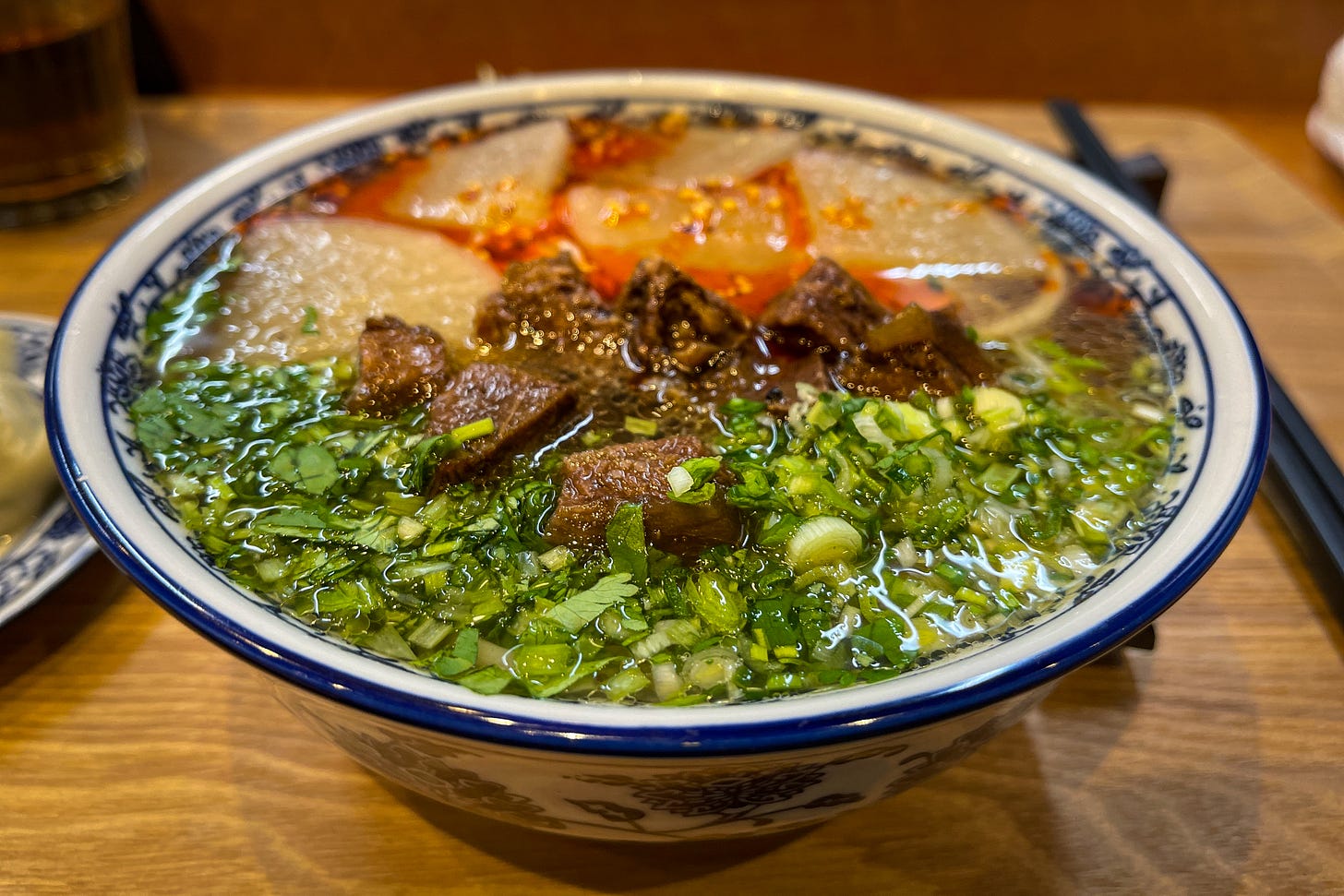
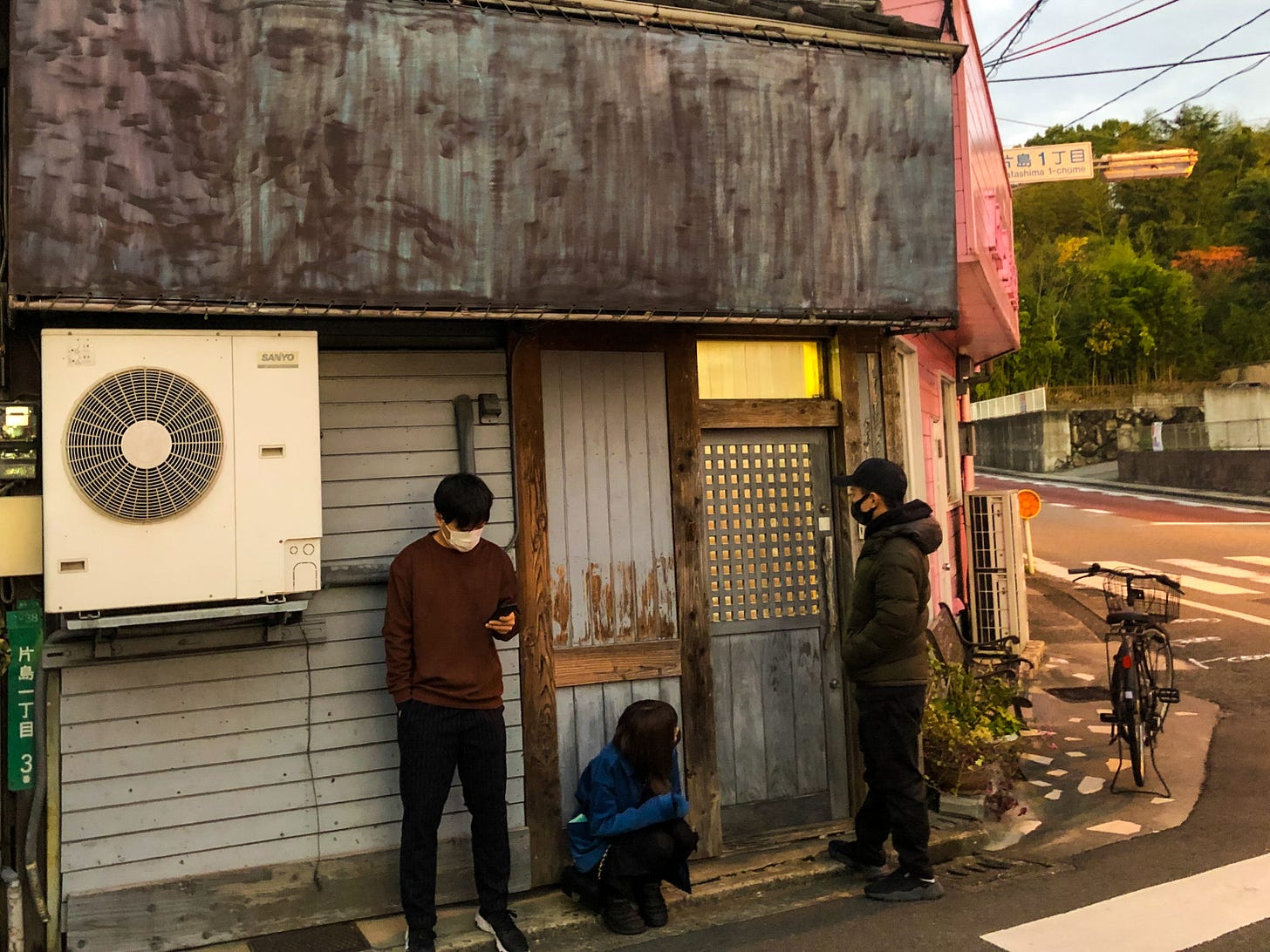
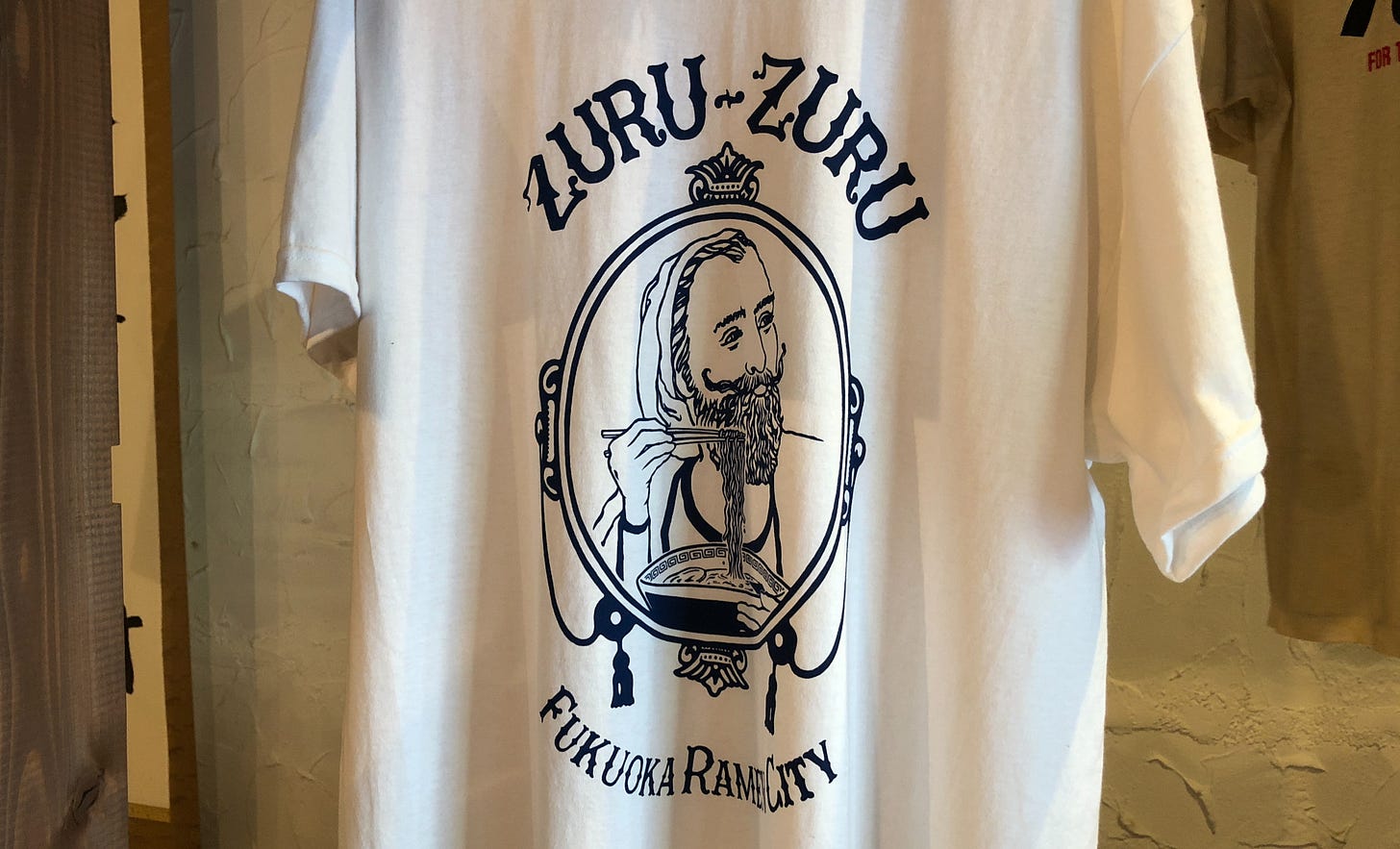
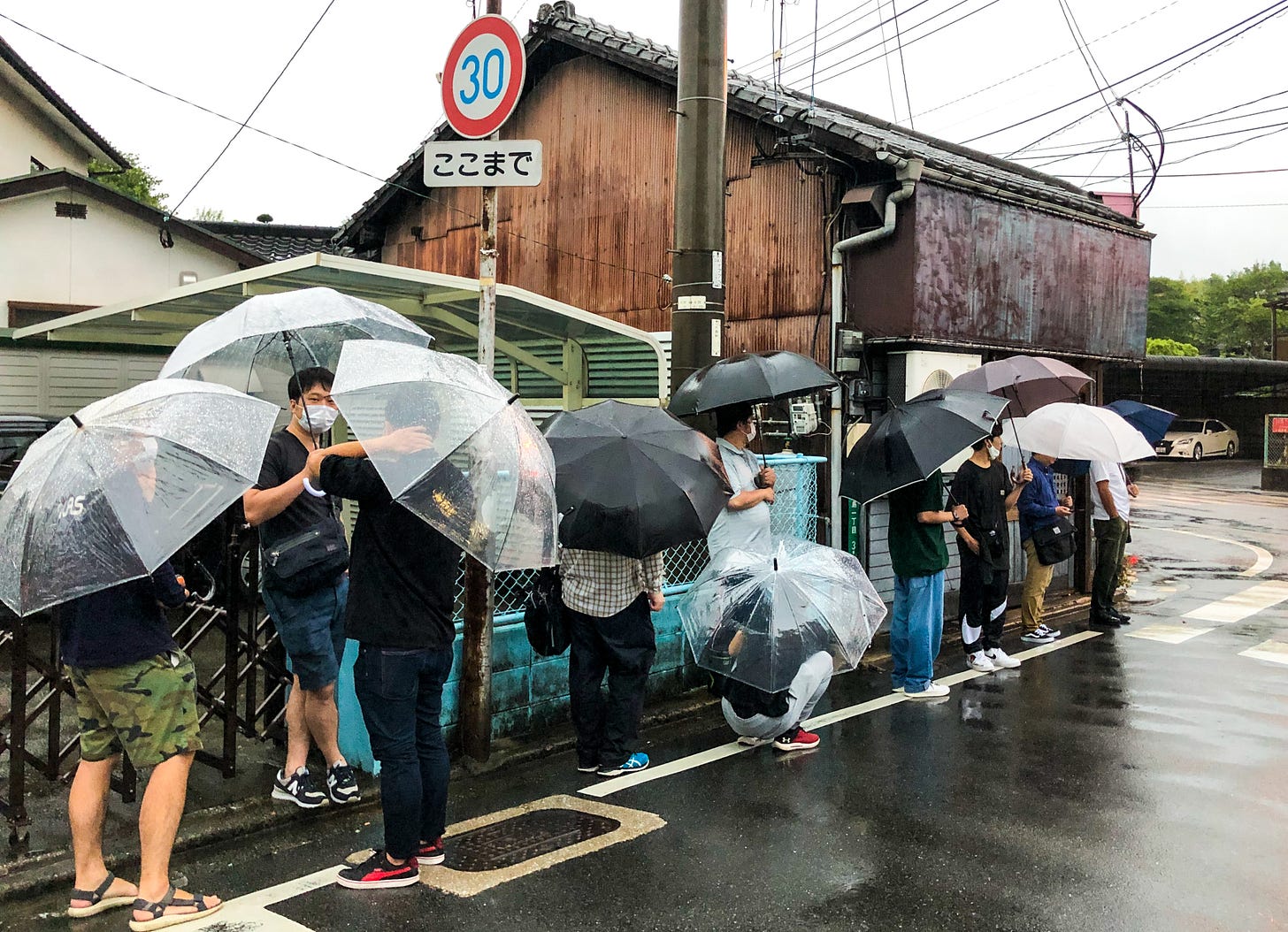
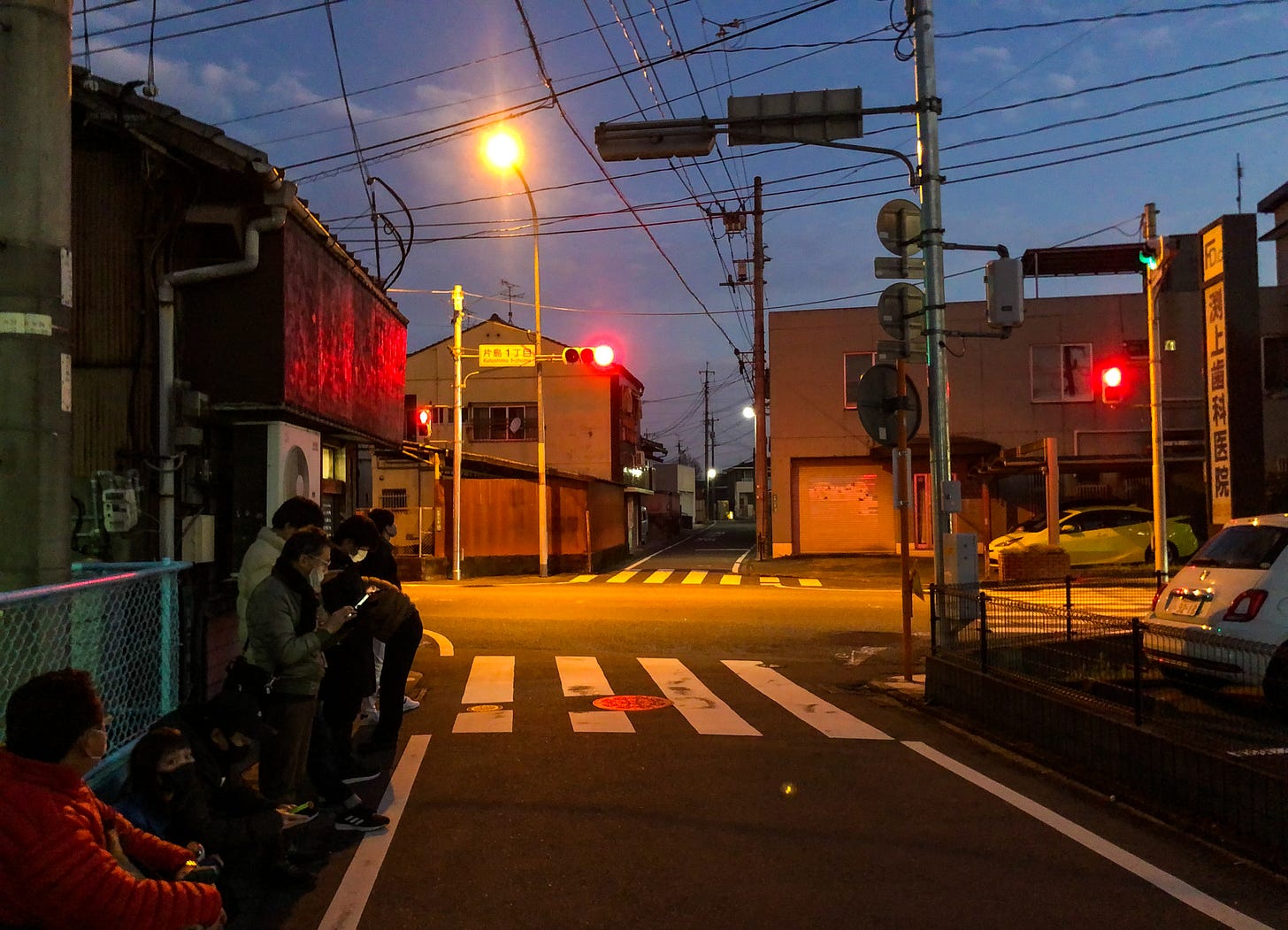
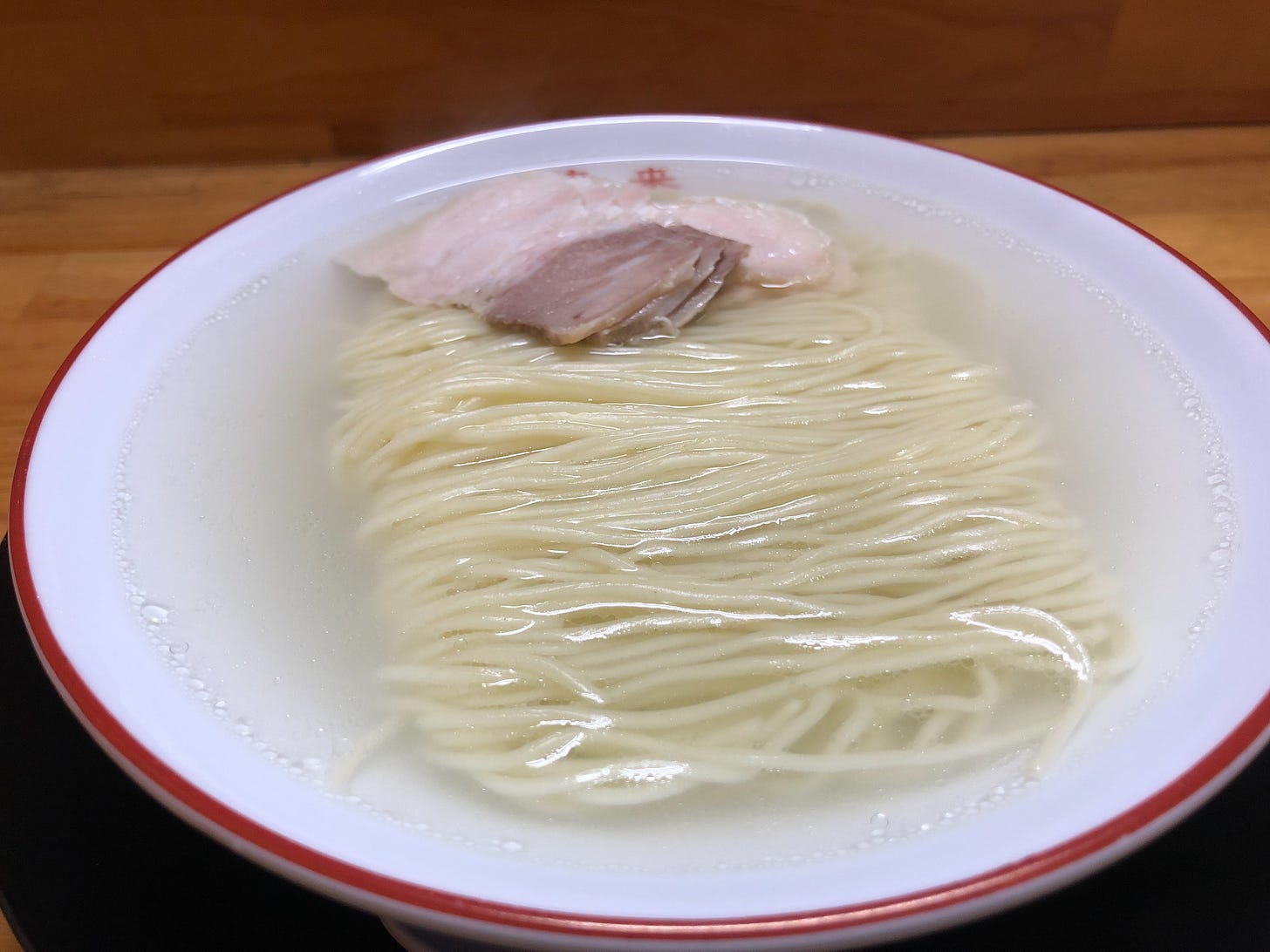
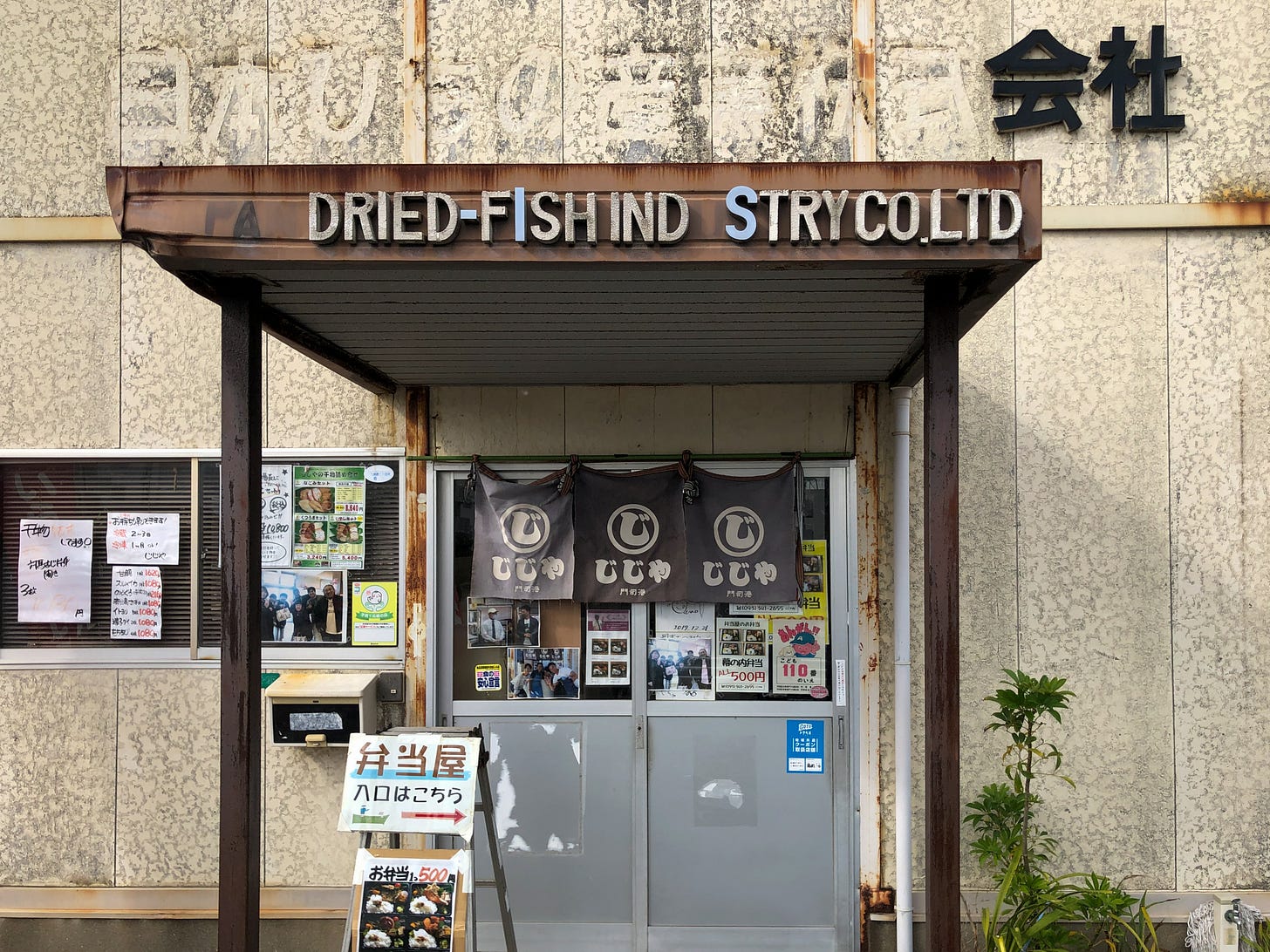
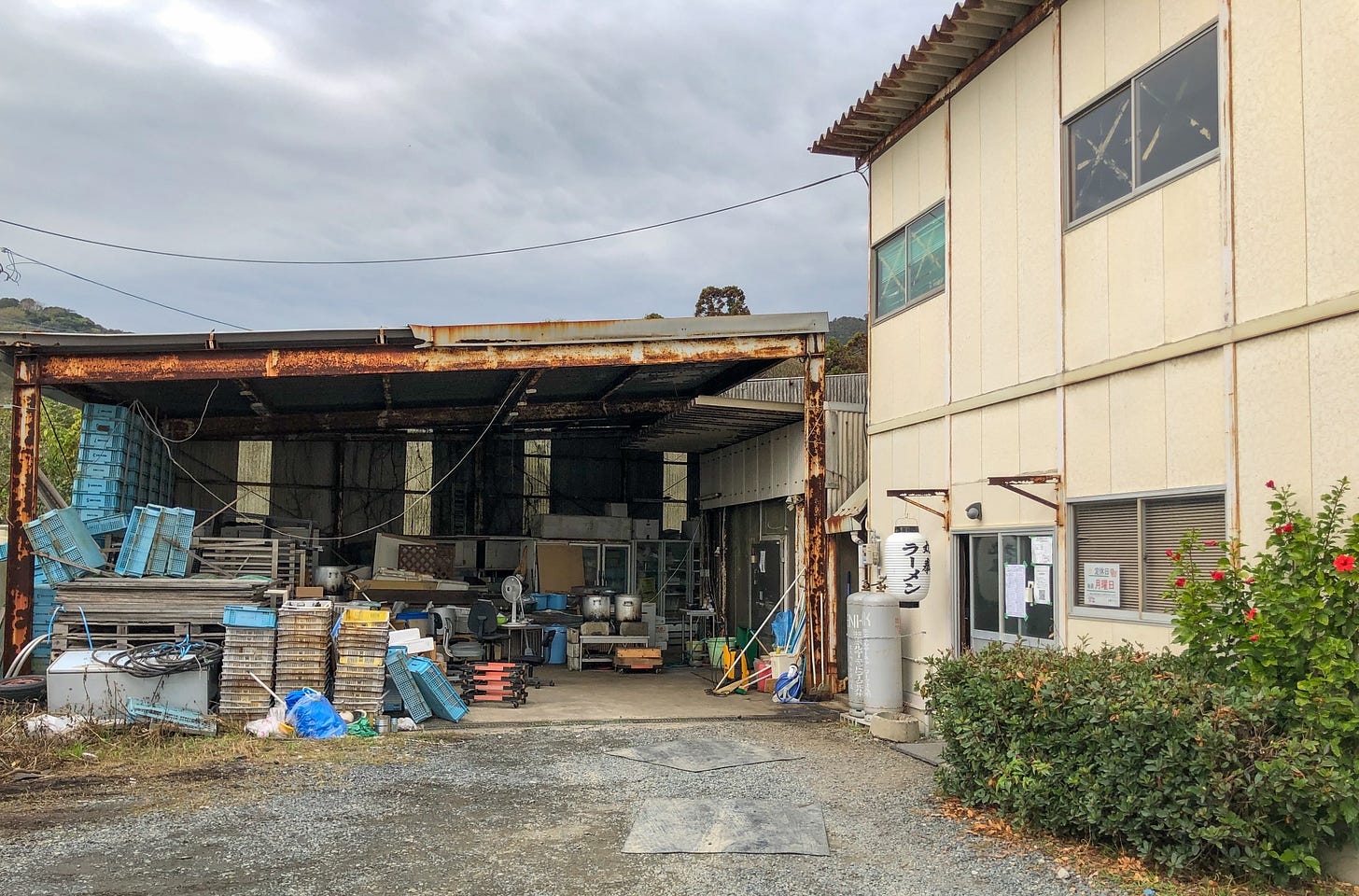
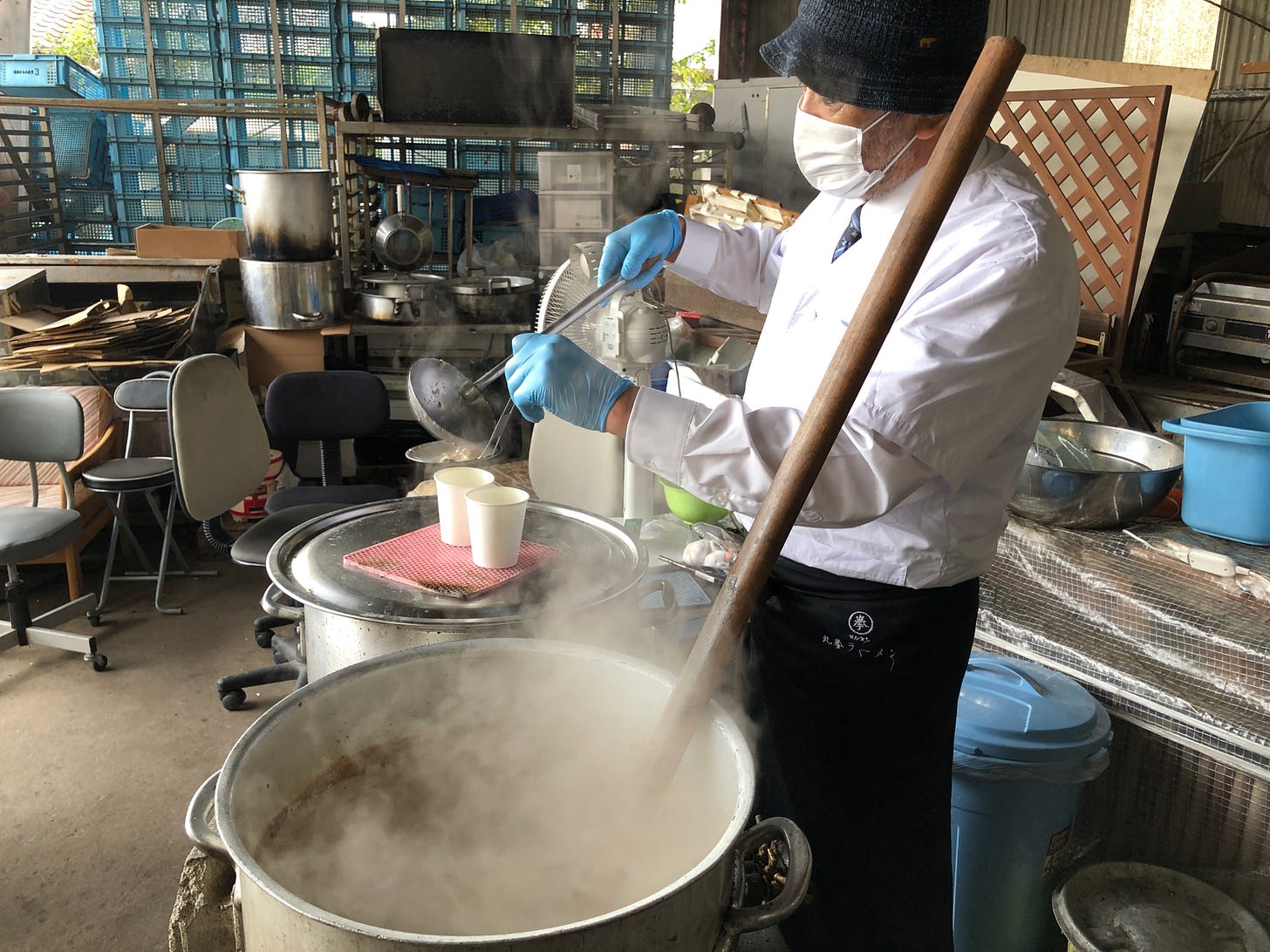
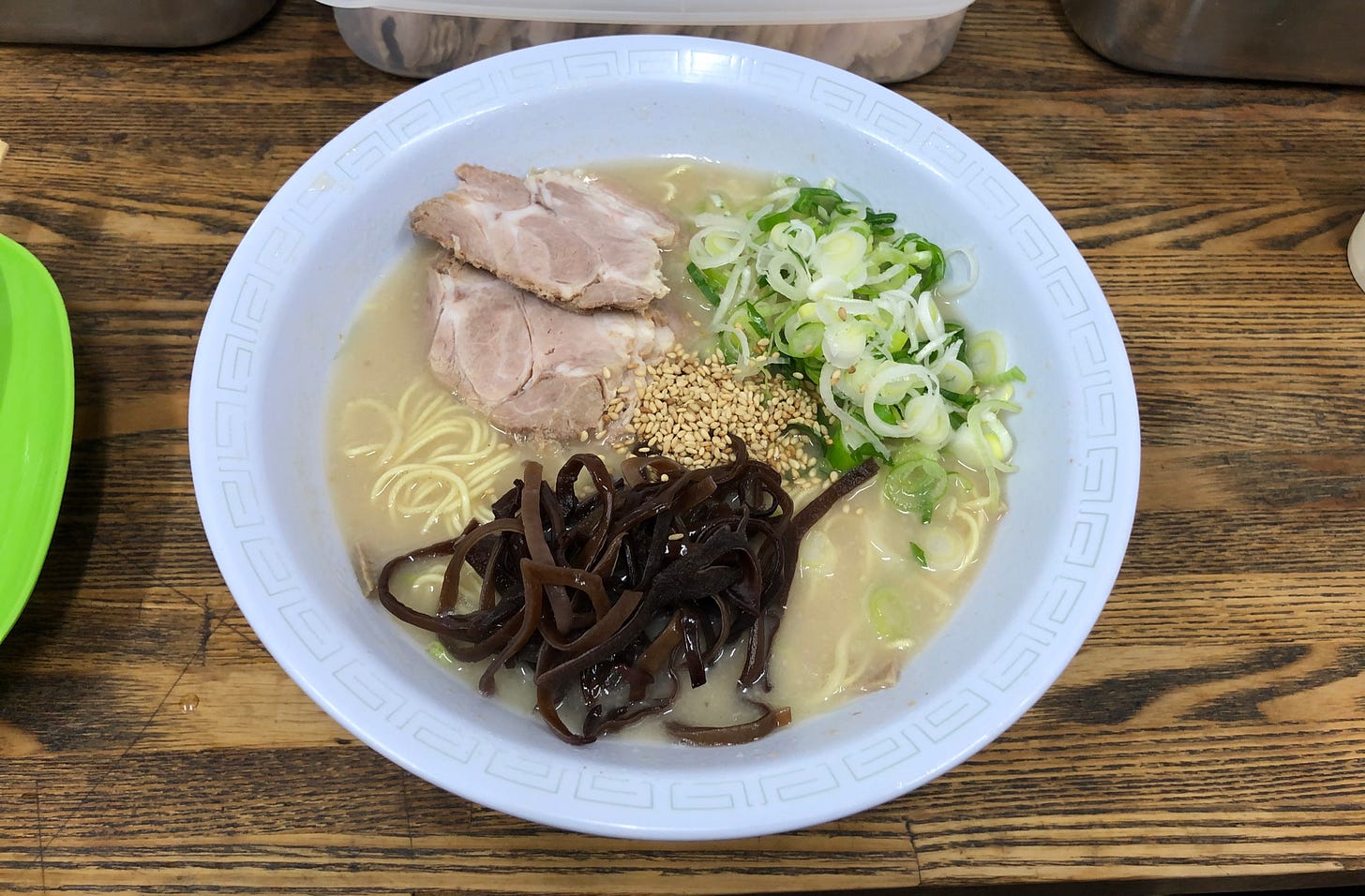
Thanks, i enjoy it like i was there
Thoroughly enjoyed this! What an adventure.